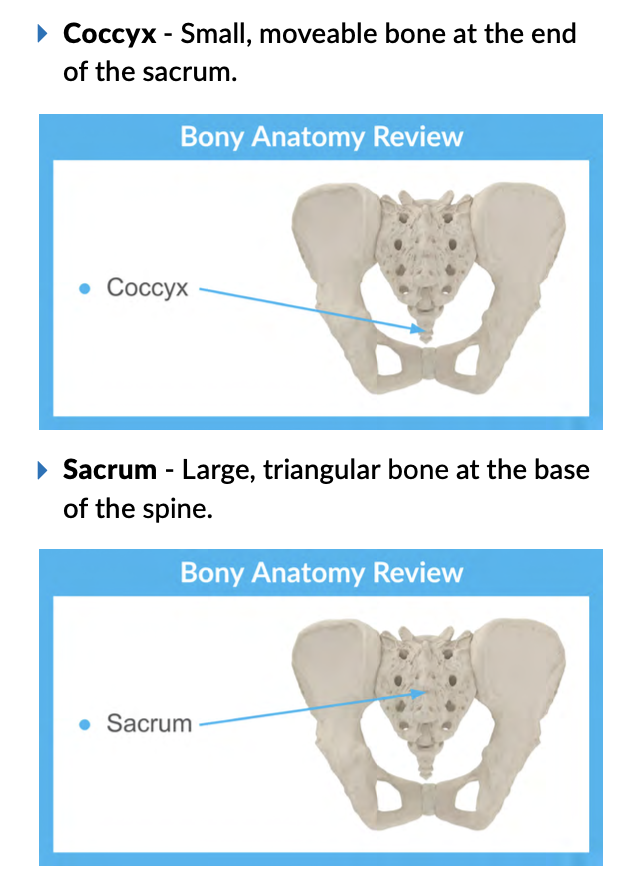Tailbone Pain
I’d like to explore tailbone pain, often caused by tightness around the sacrum and tailbone area. Pelvic floor tightness can also pull on the tailbone causing discomfort.
Sacrum & Coccyx
The sacrum is a triangular bone at the base of the spine that connects the spine to the pelvis. It is snuggled between both halves of the pelvis. The sacrum strengthens and stabilizes the pelvis. Several important stabilizing muscles and prime mover muscles attach onto the sacrum.
The coccyx (aka tailbone) attaches at the bottom most part of the sacrum. The largest glute muscle attaches onto the coccyx, along with several of your pelvic floor muscles.
(Duvall & Hammond, n.d.)
Tailbone Pain
When the muscles around the tailbone are tight, it prevents the pelvis to be able to move in it’s healthy full range of motion into anterior and posterior tilt, while not allowing the sacrum to freely move into nutation and counternutation (Duvall & Hammond, n.d.).
Anterior Tilt of Pelvis
Posterior Tilt of Pelvis
We can see this tightness when someone early butt winks in squats (tucks the tail under too soon), or when in a standing position the pelvis stays in a tucked, gripped position (Duvall & Hammond, n.d.). Also, if there is pain or tenderness at the tailbone area when sitting on firm services, that often indicates that the muscles around the sacrum and tailbone area are tight and need relaxing (Duvall & Hammond, n.d.). Additionally, there could be a history of a fall, or tear/ trauma from delivering a baby (Duvall & Hammond, n.d.). Seeing a physiotherapist who specializes in pelvic floor is recommended for those with acute or chronic issues around the tailbone area.
To help, we need to create space around the tailbone so we can move the pelvis and sacrum in their full ranges of motion. To create that space we need to inhibit the muscles around the tailbone (Duvall & Hammond, n.d.). Once we have lessened the tension around the area, we can start our regular exercise routine and see if the discomfort is less while strengthening our body from head to toe during our workouts.
Here are five exercises you can do at home. They are subtle, but important first steps if you are experiencing painful symptoms.
Click each picture to view quick video.
After performing these five exercises, try doing your regular workout routine to discover if you have less tension and more ease of movement around your tailbone area. I bet you will! I just love how movement heals our bodies, one workout at a time :)
Resources
Duvall, S., & Hammond, A. (n.d.). Pelvis Pro. Core Exercise Solutions. https://sarahduvallpt.mykajabi.com/store/FFgZ3Mzr



